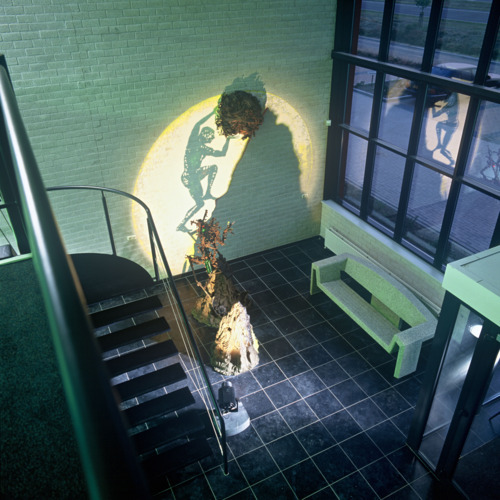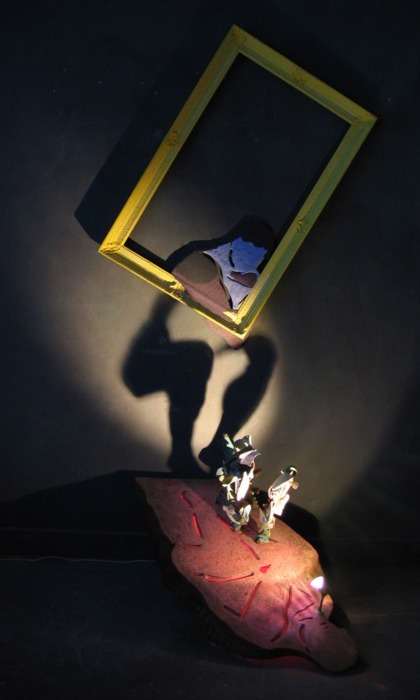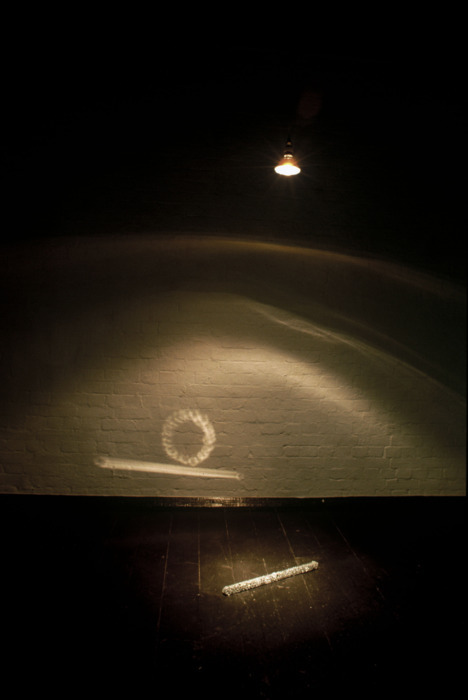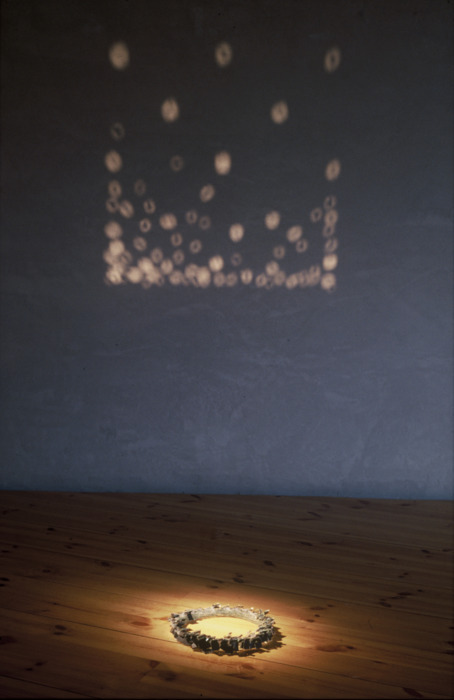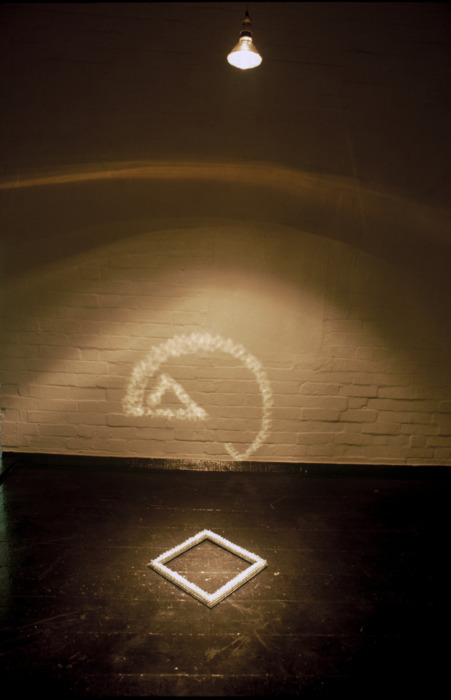Amanda Smith
Wiegman was born in the Netherlands in 1944, and is now known as one of the “Most Brilliant Artists of the Netherlands,” a title awarded to him in 2009. He is considered an “art omnivore” due to the sheer amount of different mediums he has utilized in his work. He began working with shadow and light in 1965, and it is that work which gave him an international breakthrough.
When asked about his thoughts on his own work in the 70s, Wiegman responded with, “I did not invent the phenomenon shadow, I just make holes in the light.”
He uses a lot of trash, scrap metal, shiny things, plastic, glass bottles, etc. to build these strange sculptures. When a single light source is shown on them at just the right angle, it casts a very detailed shadow. He uses the trash to “make holes in the light,” making his shadow figures out of the darkness, but he also uses the color in his materials to add to the light, such as in his piece “Venus on fire” made in 1985, shown below.
A recurring theme in a lot of his work is that he attempts to create ideal beauty from trash, like using things you would find on the side of the street to replicate statues of Greek goddesses, shown again below in his piece “Venus” made in 1986. He adds so much detail and manipulates the light so well to cast figures that look almost 3D.
“Rembrandt illuminated” is also a very interesting piece, shown below. Wiegman depicts the two main characters from Rembrandt’s painting, “The NightWatch,” cast out of shadow on a canvas. The sculpture part is actually paintbrushes and molded dry clumps of paint, a classic medium to use when working with a canvas, but Wiegman does not have the paint physically touch the canvas in order to create his figures.
He relies heavily on perspective, really throwing in your face the two sides of his art, with the sculpture and the shadows being two entirely separate entities in a lot of his work. In one piece, the title even tells you that it should be “Regarded from two sides”, made in 1984, shown below.
He will have one still light source, and if there is movement in his work, it is the physical piece turning as the light changes the shadow it casts. He also interestingly has some of his shadow figures interact with the 3D world, shown below in his pieces “Sisyphus”, seen below on the left, made in 1992, and “The thinker,” shown below on the right, made in 1989. Much like Sisyphus continuously rolling the same rock up a hill, Wiegman has been known to tear down his own works in order to use the scraps to create something new. With “The thinker”, it is almost as if the figure is shown to be limited by being in the frame. With shadow legs, he is more fluid and free, but his head is carved from wood, stuck in place, damning him to think forever.
Diet Wiegman also challenges observers with some optical illusions of sorts, where he uses very reflective pieces to create one distinct shape, and then shines a light over them to reflect a very different design on the wall above it. This is shown very clearly in a small series, starting below on the right with a piece entitled “(dis)appearance” and the rest being untitled.
https://en.wikipedia.org/wiki/Diet_Wiegman
https://dietwiegman.tumblr.com/light%20sculptures







